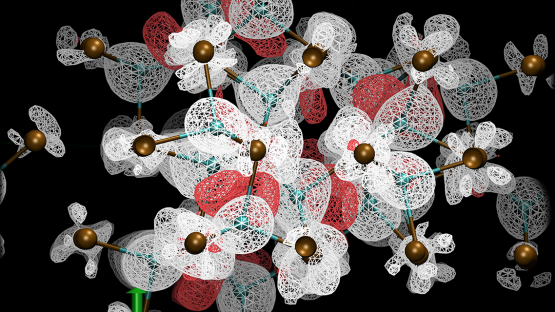The IAEA has developed novel theoretical calculation models on how primary radiation affects all 83 natural chemical elements and has made this information available online. These calculations can help experts make stronger and more resistant materials to be used in areas where materials may be exposed to radiation, including in the nuclear industry, medicine, biology, fusion and space technology.
Chemical elements, made up of atoms, vary in the number of protons, neutrons and electrons. This is responsible for their physical and chemical properties, including how they react to radiation. Depending on their composition, materials are affected differently by radiation. They display different kinds of defects after an initial atomic displacement event induced by a high-energy particle. Studying this so-called primary damage is key to understanding any kind of radiation effects.
Knowing how chemical elements in a certain material react to radiation will help experts improve the resistance of these materials by modifying their composition. This information is particularly useful for improving materials used in nuclear reactors, research reactors, accelerators and future fusion reactors. Radiation damage in materials is a key parameter that has a major role in the life expectancy and the safe and secure operation of nuclear facilities.
The new calculation models were developed in the framework of a recently completed IAEA coordinated research project (CRP), which brought together theoretical and experimental physicists and engineers from 19 different institutions across 14 countries. The novel models offer standard measures for radiation damage quantification, providing more exact results than the current international standard, the Norgett−Robinson−Torrens displacements per atom (NRT-dpa) model, which has been used universally since 1975. Although the NRT-dpa model is useful for correlating many radiation damage phenomena, it has demonstrated some limitations. The model does not provide exact calculations when the reactor structure is made of material other than iron and when the neutron energy is higher than 2 MeV, which is the case in most modern applications.
“The new IAEA models help calculate more precisely the possible radiation damage of more fragile and radiation-sensitive materials, such as silicon, and are already used for prototyping fusion materials and space technology,” said Jean-Christophe Sublet, Head of the IAEA Nuclear Data Services Unit.
The data collected through the CRP can help experts explore both standard and novel applications. The review of the theory and the CRP results published in the European Physical Journal describe the latest methodologies and metrics, and provide recommendations for standard and novel approaches. All CRP publications and associated data are openly available here.
“The CRP results can help advance our understanding of physics as defect production metrics are the starting point in the complex problem of analysing, correlating and simulating the behaviour and evolution of organic and inorganic matters under particle irradiation from the sun, space, earth or man-made, in nature, humans, crops or engineered nuclear plants and devices,” said Sublet.
A Joint Abdus Salam ICTP-IAEA Workshop on Radiation Damage in Nuclear Systems: from Bohr to Young, which will discuss this topic, is planned to take place in 2022.
For further information related to this CRP, please see the CRP page.




